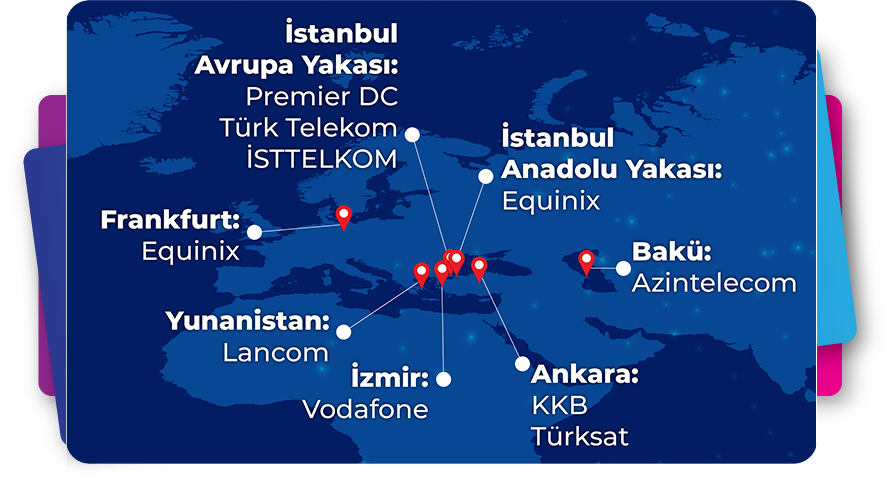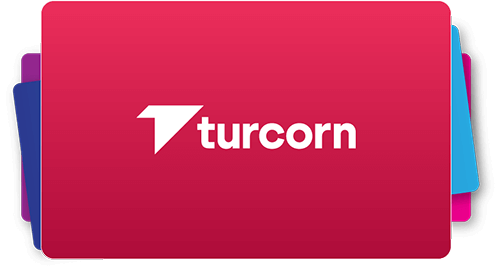What is Cloud?
Cloud computing refers to the delivery of computing services including servers, storage, databases, networking, software and analytics over the internet (cloud). The companies that offer these computing services are called cloud providers, and these providers typically charge users on a pay-as-you-go model. This means that users only pay for the services they use and can scale the services they receive as needed. This makes the cloud a flexible and cost-effective solution for businesses. Cloud computing enables users to access data and applications from anywhere with an internet connection, at any time, on any device. This makes the cloud an attractive option for businesses looking to access the benefits of advanced technologies without the cost and maintenance of building and maintaining their own infrastructure.
Cloud computing is a model for delivering computing services over the internet, including servers, storage, databases, networking, software, and analytics. Users can access these services from anywhere and on any device as long as they have an internet connection. Cloud computing allows businesses to access advanced technologies and services without the upfront cost and maintenance to build and maintain their own infrastructure. There are three main types of cloud computing: Infrastructure as a Service (IaaS), Platform as a Service (PaaS) and Software as a Service (SaaS).
Infrastructure as a Service (IaaS): Infrastructure as a Service is the most basic type of cloud computing and provides users with access to infrastructure such as servers, storage and networking. Users have full control over the infrastructure and can use it to build and run their own applications and systems.
Platform as a Service (PaaS): Platform as a Service gives users access to a platform for developing, testing and deploying applications. The cloud provider manages the infrastructure and maintenance. This allows users to focus on developing their applications. PaaS provides tools and frameworks for building, testing and deploying applications, as well as database management, security and scalability services.
Software as a Service (SaaS): Software as a Service is the most comprehensive type of cloud computing and provides users with access to a complete software solution delivered over the internet. The cloud provider manages the infrastructure, maintenance and updates, and users can access the software through a web browser. SaaS is widely used for applications such as customer relationship management (CRM), enterprise resource planning (ERP) and human resource management.
There are several factors to consider when purchasing cloud solutions. These factors are as follows:
Cost: Determine your budget and evaluate the costs associated with different cloud solutions. Be sure to consider ongoing costs such as storage fees and usage fees.
Security: Consider the security measures in place to protect your data and ensure compliance with relevant regulations.
Scalability: Choose a solution that can scale with your business as it grows and changes.
Performance: Look for a solution that offers good performance with low latency and high availability.
Integration: Consider how well the cloud solution will integrate with your existing systems and processes.
Support: Look for a provider that offers reliable support, including documentation, training and technical assistance.
Vendor reputation: Research the vendor's reputation and consider factors such as track record, customer satisfaction and industry recognition.
Contract terms: Carefully review the terms of the contract, including any SLAs (service level agreements), to ensure you understand your obligations and rights.
Private cloud is a cloud computing platform dedicated to a single business. It can be deployed in-house or hosted by a third-party provider. Private clouds offer more control and security, but can be more expensive to set up and maintain than public clouds.
A public cloud is a cloud computing platform owned and operated by a third-party provider and available to the general public. Public clouds are generally cheaper than private clouds, but may not offer the same level of control and security.
A hybrid cloud is a combination of a private cloud and a public cloud. It allows a business to use the public cloud for certain workloads and the private cloud for others, depending on their specific needs. Hybrid clouds offer the benefits of both private and public clouds, but can be more complex to deploy and manage.
Cloud computing is a model for delivering computing services such as servers, storage and networking over the internet. It allows users to access and use these resources on demand, without the need to purchase and maintain physical infrastructure.
Cloud computing is based on a network of servers connected over the internet. These servers are used to store, process and manage data and applications. When a user wants to access a cloud service, they send a request over the internet to the cloud provider's servers. The servers then process the request, perform the necessary computing tasks and send the results back to the user.
There are several different types of cloud services, including infrastructure as a service (IaaS), platform as a service (PaaS) and software as a service (SaaS). IaaS provides access to computing infrastructure such as servers and storage over the internet. PaaS provides a platform for developing, testing and deploying applications. SaaS provides access to software applications over the internet without the need for users to install and maintain them on their own computers.
Cloud architecture is the design of the systems and components that make up a cloud computing platform. It includes the management and organization of hardware and software infrastructure and resources.
The three main components of a cloud architecture are front end, back end and network. The front end is the user interface, which includes client devices (such as computers or smartphones) that users interact with to access cloud services. The back end is the cloud infrastructure, which includes servers, storage and other resources that power cloud services. The network is the connection between the front end and the back end that allows users to access cloud services over the internet.
There are several different types of cloud architecture, including public, private and hybrid clouds. Public clouds are owned by third-party providers and are available to the general public. Private clouds are dedicated to a single business and can be deployed in-house or hosted by a third-party provider. Hybrid clouds are a combination of public and private clouds and allow a business to use the public cloud for certain workloads and the private cloud for certain workloads.
There are many different ways to use cloud products, depending on the specific products and services used. Some examples are as follows:
Infrastructure as a service (IaaS): IaaS provides access to computing infrastructure such as servers, storage and networking over the internet. It can be used to host websites, applications and databases and to store and manage data.
Platform as a service (PaaS): PaaS provides a platform for developing, testing and deploying applications. It can be used to build and run custom applications or to host and scale existing applications.
Software as a service (SaaS): SaaS provides access to software applications over the internet without the need to install and maintain them on users' own computers. Examples include email, customer relationship management (CRM) and project management tools.
Data storage and backup: Cloud storage services such as Google Drive and Dropbox can be used to store and share files and documents. Cloud backup services can be used to create backups of important data and files.
Virtual desktop: Virtual desktop infrastructure (VDI) allows users to access a virtual desktop from any device from anywhere with an internet connection. This can be used to access applications and data remotely.
Overall, there are many different ways to use cloud products depending on your specific needs and goals. The goal is to choose the right products and services for your business and use them in a way that helps you achieve the results you want.
There are many advantages of using cloud computing. These advantages are as follows:
- Cost savings: One of the main advantages of the cloud is that it reduces IT costs for businesses. This means that users do not need to invest in expensive hardware and software, as cloud providers manage and maintain the infrastructure.
- Scalability: Cloud computing enables businesses to easily scale up or down their resources as needed without the need to purchase and install additional hardware. This enables businesses to respond quickly to changes in demand.
- Increased productivity: Cloud computing can increase productivity by allowing employees to access data and applications from anywhere with an internet connection. It can also reduce the time and resources needed to maintain and update software and hardware.
- Enhanced security: Cloud providers often have robust security measures in place to protect users' data and prevent unauthorized access. This provides businesses with enhanced security and can help them comply with relevant regulations.
- Advanced disaster recovery: Cloud-based data backup and recovery services can help businesses protect their data and recover quickly from disasters such as natural disasters or cyber-attacks.
- More agility: The cloud allows businesses to be more agile and adaptable by allowing them to quickly and easily access and deploy new resources when needed.
Overall, the cloud can provide businesses with many benefits, including cost savings, scalability, increased productivity, improved security, enhanced disaster recovery and greater agility.
There are many different scenarios where businesses and individuals use cloud computing services. Some of these are as follows:
- Infrastructure as a Service (IaaS) - Instead of building and maintaining their own on-premises infrastructure, businesses can use IaaS to access computing resources such as storage, networking and servers on a pay-as-you-go basis.
- Platform as a Service (PaaS) - PaaS allows developers to build and deploy applications and services without worrying about the underlying infrastructure. This saves time and resources as the cloud provider manages the infrastructure and other necessary components.
- Software as a Service (SaaS) - With SaaS, users can access software applications over the internet instead of installing and maintaining them on their own computers. This is often used for business applications such as customer relationship management (CRM) systems and enterprise resource planning (ERP) systems.
- Disaster Recovery - Cloud computing can provide a reliable and scalable solution for disaster recovery, allowing businesses to quickly recover from outages to their on-premises systems.
- Backup and Archiving - Cloud storage can be used to store and protect data for backup and archiving purposes.
- Data Analytics - Cloud computing can make it easier and more cost-effective to perform data analytics and machine learning tasks, as it provides access to powerful computing resources on demand.
There are several different types of cloud computing solutions, each with their own characteristics and uses. These are as follows:
- Public cloud - A public cloud is owned and operated by a third-party cloud service provider that offers resources such as storage, computing and networking over the internet. Public clouds are easy to use and highly scalable, making them a popular choice for many businesses.
- Private cloud - A private cloud is a cloud computing platform dedicated to a single business. Private clouds can offer more control and security than public clouds, but can be more expensive to set up and maintain.
- Hybrid cloud - A hybrid cloud is a combination of a public cloud and a private cloud, where a business uses both types of cloud to host its applications and data. This allows a business to enjoy the benefits of both public and private clouds.
- Community cloud - A community cloud is shared by a group of businesses with similar needs and goals, such as those in the same industry or geographic region. Community clouds offer the benefits of a shared infrastructure while providing the security and control of a private cloud.
- Multi-cloud - A multi-cloud environment, or multicloud, is where a business uses multiple cloud service providers to host different applications or spread workloads across multiple providers. Multicloud can offer more flexibility, but can be more complex to manage.
Cloud computing can be used for a wide range of applications, including
- Web and mobile applications
- Data storage and backup
- Big data analytics
- Artificial intelligence and machine learning
- Internet of Things (IoT)
- Test and development environments
- Disaster recovery and business continuity
- Virtual desktop infrastructure (VDI)
- Collaboration and productivity tools
- Content management and delivery
Cloud computing can be particularly useful for applications that require large amounts of computing resources, as it allows businesses to access these resources on demand, rather than having to build and maintain their own infrastructure. It can also be useful for applications that need to be highly scalable, as cloud providers can easily add more resources as needed.
There are many potential benefits for businesses moving to the cloud, including
- Cost savings: Cloud computing can reduce the need for businesses to invest in expensive hardware and software, and the cost of maintaining and updating these resources.
- Scalability: Cloud resources can be easily scaled up or down as needed, allowing businesses to meet changing demands quickly and easily.
- Flexibility: Cloud computing allows businesses to access resources and applications from anywhere with an internet connection, making it easier to work remotely or support a distributed workforce.
- Enhanced collaboration: Cloud-based tools and platforms can make it easier for teams to collaborate and share information regardless of their location.
- Increased security: Cloud providers often have advanced security measures to protect data and applications that can be more effective than many businesses can provide on their own.
- Better disaster recovery: Cloud computing can provide a reliable and scalable solution for disaster recovery, allowing businesses to quickly recover from outages to their on-premises systems.
- Improved agility: Cloud computing can make it easier for businesses to be agile and respond quickly to changing market conditions or customer needs.
Bulutistan, Turkey's fastest growing technology company, is ahead of its competitors in terms of functionality with its advanced services and tools. Offering a significant number of cloud solutions and services, Bulutistan provides infrastructure to more than 350 companies among the top 500 companies in Turkey and more than 600 organizations among the top 1000 institutions.
- Bulutistan allows you to easily scale up or down as needed to meet changing demands quickly.
- Bulutistan has a 99.9% uptime commitment, making it a reliable choice for mission-critical workloads.
- Bulutistan has a range of security measures to protect your data and applications, including encryption, identity and access management, and threat protection.
- Bulutistan integrates with a range of tools and technologies, making it easy to build and manage applications.
- Bulutistan has data centers and regions that allow you to deploy applications and workloads close to your users.
- Bulutistan offers a variety of support options to help you get the most out of the platform, including online resources, community support and paid support plans.
Bulutistan is a highly reliable cloud computing platform used by many businesses to host their applications and data. It has a 99.9% uptime commitment, which means it is designed to be available almost all the time.
However, no system is completely foolproof and it is always important for businesses to have a robust disaster recovery plan in case of unexpected outages. Bulutistan offers a range of tools and services to help businesses create and implement a disaster recovery plan.
It is also important for businesses to take steps to protect their data, such as using encryption and implementing secure access controls. Bulutistan has a range of security measures in place to protect data and applications, including encryption, identity and access management, and threat protection.
In conclusion, Bulutistan is a reliable and secure platform that can be a good choice for hosting business data, but it is always important for businesses to carefully assess their specific needs and requirements and have a plan in place to address outages.
The use of cloud computing can be advantageous for businesses of all sizes and in all industries. Some businesses that can particularly benefit from cloud computing include the following:
- Small and medium-sized businesses
- Startups
- Businesses with distributed teams
- Businesses with seasonal or variable workload
- Businesses in regulated sectors
However, cloud computing may not be the best fit for every business. It is important for businesses to carefully assess their specific needs and requirements before deciding whether to migrate to the cloud.
There are several factors that can affect the cost of using cloud computing for businesses. These are as follows:
- Type of cloud service: Different cloud services have different pricing models, such as pay-as-you-go, subscription-based or tariffed billing.
- Amount of resources used: Businesses are typically charged based on the amount of resources they consume, such as storage, computing power and bandwidth.
- Time of use: Some cloud providers charge based on the length of time resources are used, while others charge a flat fee regardless of the duration.
- Support level: Some cloud providers offer different levels of support, with higher levels of support coming at a higher cost.
- Integration with existing systems: Migrating to the cloud and integrating with existing systems can require additional time and resources, which can increase the overall cost.
It is important for businesses to carefully evaluate their cloud usage costs to ensure they are getting the best value for their money. Many cloud providers offer tools and resources to help businesses monitor and optimize their usage and costs.
You can contact us instantly by clicking on the link to get detailed information about the installation times of Bulutistan Cloud services.
Which Additional Services Can I Receive as a Service While Receiving Bulutistan Cloud Services?
There are many services and services you can get from Bulutistan, one of Turkey's most preferred local cloud service providers. You can get detailed information about the services and services you want to receive by clicking on the links below.
Bulutistan offers a range of tools and services to help businesses manage their cloud migration and operations in the cloud. Some of these tools are as follows:
- Bulutistan Site Recovery: Bulutistan Site Recovery helps businesses protect their workloads by enabling them to create a disaster recovery plan that replicates on-premises or Bulutistan workloads to a secondary location.
- Bulutistan Backup: This service provides a simple and cost-effective way for businesses to back up their data and protect against data loss.
- Bulutistan Monitoring: This service provides real-time insights and alerts on the performance and availability of Bulutistan resources, helping businesses quickly identify and resolve issues.
- Bulutistan DevOps: This service provides a set of tools and services to help businesses plan, develop, deliver and monitor their applications and services.
You can click on the link to get detailed information about Bulutistan Cloud solutions and get 24/7 support from our professional team.
 TR
TR AZ
AZ RU
RU








 Past Event
Past Event









